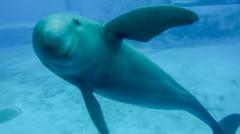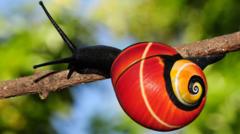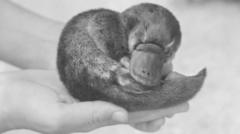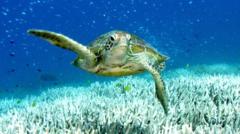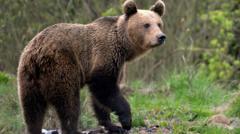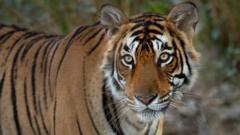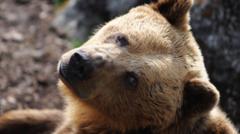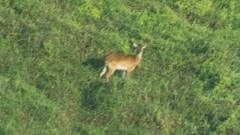This groundbreaking assessment by the International Union for Conservation of Nature reveals critical genetic and geographical distinctions among giraffe populations, aiming to enhance conservation strategies for these beloved creatures.
**New Findings Recognize Four Distinct Giraffe Species, Altering Conservation Strategies**

**New Findings Recognize Four Distinct Giraffe Species, Altering Conservation Strategies**
Scientists have officially classified giraffes into four unique species, with significant implications for their conservation efforts.
In a remarkable update to giraffe taxonomy, researchers from the International Union for Conservation of Nature (IUCN) have identified three additional species of giraffe, expanding their classification from one to four. This shift not only deepens our understanding of giraffe diversity but also has vital implications for their conservation status and management.
Scientists reached this conclusion by examining variations in skull size and head shape across various giraffe populations alongside the genetic differences that indicate diverse evolutionary paths. Researchers considered geographical barriers, including deserts, rivers, and valleys, which likely led to the isolated evolution of different giraffe groups throughout Africa.
Among the newly recognized species is the Southern giraffe, which roams regions in South Africa, Namibia, and Angola, among others. Natural separations such as the Kunene and Zambezi rivers have kept these giraffes geographically distinct.
The second species identified is the Reticulated giraffe, primarily found in the open savannas of Kenya, Somalia, and Ethiopia. Notable geographical features like the Tana River and the mountainous terrain of Ethiopia contributed to this species' unique evolution.
The Northern giraffe is the third species, inhabiting areas in western Ethiopia, southern Sudan, and Uganda. The Nile River and Lake Victoria, along with specific migration patterns, are thought to have kept these giraffes isolated from others.
The final member of this new classification is the Masai giraffe, characterized by its unique spotted patterns. These giraffes are located in Kenya, Tanzania, and Uganda, having diverged from the Northern giraffe due to their geographical separation.
This reclassification signals a significant change for the IUCN, which previously listed giraffes as a single vulnerable species. Understanding the distinct species and their sub-groups is crucial for developing effective conservation strategies tailored to their unique needs. "The more precisely we understand giraffe taxonomy," states co-author Michael Brown, "the better equipped we are to assess their status and implement effective conservation strategies." The IUCN plans to reassess these species' vulnerability status to enhance protection for these majestic animals in their natural habitats.
Scientists reached this conclusion by examining variations in skull size and head shape across various giraffe populations alongside the genetic differences that indicate diverse evolutionary paths. Researchers considered geographical barriers, including deserts, rivers, and valleys, which likely led to the isolated evolution of different giraffe groups throughout Africa.
Among the newly recognized species is the Southern giraffe, which roams regions in South Africa, Namibia, and Angola, among others. Natural separations such as the Kunene and Zambezi rivers have kept these giraffes geographically distinct.
The second species identified is the Reticulated giraffe, primarily found in the open savannas of Kenya, Somalia, and Ethiopia. Notable geographical features like the Tana River and the mountainous terrain of Ethiopia contributed to this species' unique evolution.
The Northern giraffe is the third species, inhabiting areas in western Ethiopia, southern Sudan, and Uganda. The Nile River and Lake Victoria, along with specific migration patterns, are thought to have kept these giraffes isolated from others.
The final member of this new classification is the Masai giraffe, characterized by its unique spotted patterns. These giraffes are located in Kenya, Tanzania, and Uganda, having diverged from the Northern giraffe due to their geographical separation.
This reclassification signals a significant change for the IUCN, which previously listed giraffes as a single vulnerable species. Understanding the distinct species and their sub-groups is crucial for developing effective conservation strategies tailored to their unique needs. "The more precisely we understand giraffe taxonomy," states co-author Michael Brown, "the better equipped we are to assess their status and implement effective conservation strategies." The IUCN plans to reassess these species' vulnerability status to enhance protection for these majestic animals in their natural habitats.

